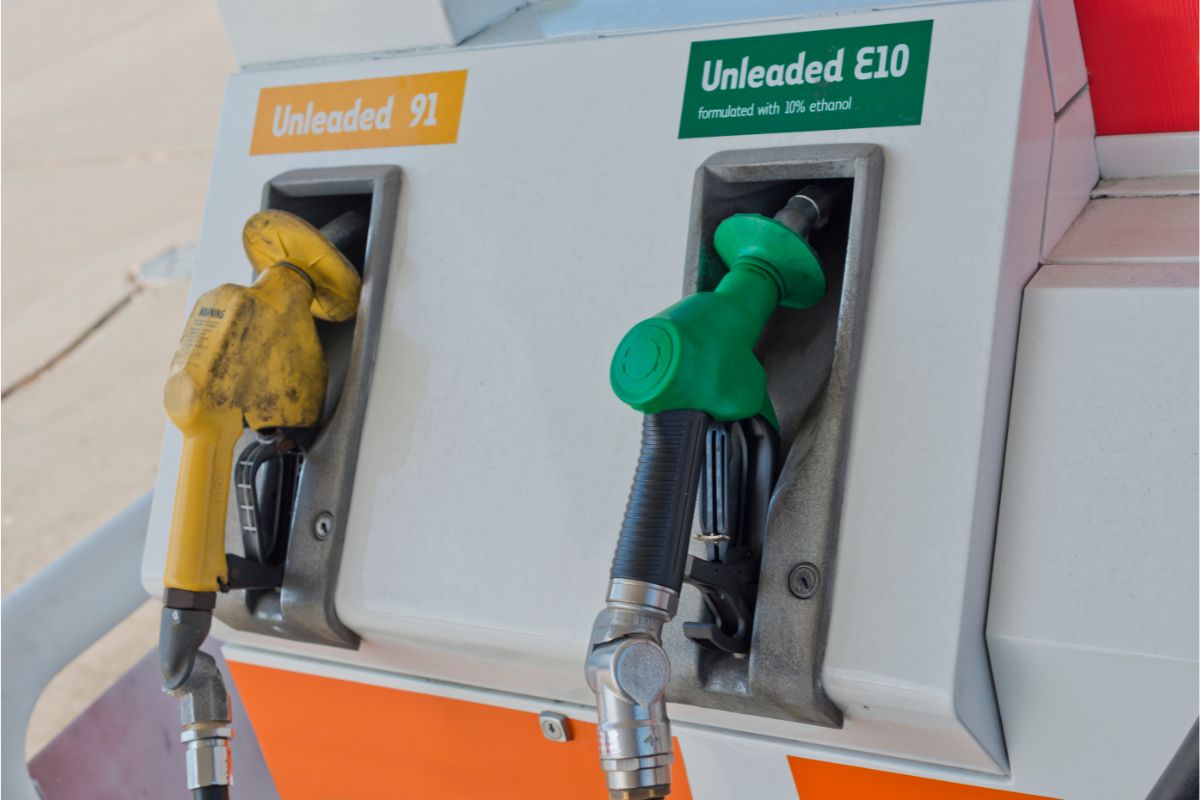When you go to fuel up your car, your cheapest option is often either E10 or Unleaded. Both are forms of petrol. Although, with new variations of fuel coming onto the market, it can be confusing to know what is best or if they can even be mixed.

Unless you are a mechanic or have an interest in cars, you may have no idea what E10 or Unleaded even is. Most drivers know whether their car is diesel or petrol but it is always great to know a little more about what is actually going into your car.
I know I do! I have created a quick summary on what E10 and Unleaded are, and provide you with the knowledge on whether you can mix them together, or if they should never even touch each other.
Let’s get into it!
What Is E10?
E10 is a low-level mixture that contains 90% gasoline and 10% ethanol. The U.S. Environmental Protection Agency (EPA) has given its usage permission for any typical gasoline-powered vehicle.
The Clean Air Act Amendments of 1990 (and subsequent laws), which required the sale of oxygenated fuels in places with harmful levels of carbon monoxide, served as the impetus for the introduction of E10.
This started the contemporary U.S. ethanol industry’s expansion. E10 is now offered for sale in every state.
To increase octane, meet air quality standards, or meet the Renewable Fuel Standard, up to 10% ethanol is added to more than 98% of gasoline sold in the United States.
According to the 1992 Energy Policy Act, E10 is not a recognized alternative fuel. (EPAct).
If you previously used Unleaded or E5 as the form of petrol for your car, you can switch to E10 without any risk to the engine or the car itself.
What Is Unleaded?

Tetraethyl lead (TEL) additive-free gasoline is known as unleaded gas. To increase the gasoline’s octane and lessen engine knock, TEL was added to the fuel (irregular combustion).
There will always be different types of unleaded gasoline and diesel fuel available as you pull up to the pump and notice the signage showing the fuel type that is offered.
The use of Unleaded gas is slowly being removed from gas stations as it has been public knowledge that unleaded fuel has various health risks. Possible health risks of using unleaded fuel are brain damage, lead poisoning, and breathing difficulties.
E5 was introduced to the US in the 1940s and was the standard car fuel for over 60 years. Now, it is being changed to E10
Are Unleaded and E10 The Same?
No, Unleaded and E10 are not the same. E10 has an ethanol content of 10% while Unleaded has a content of 5%. This is the biggest difference between the fuel types and not knowing the difference can lead to some serious damage to your vehicle.
Another large difference is that while Unleaded fuel can be used in any petrol engine car without the risk of damage or the need for adaptations, E10 cannot. Using E10 in a car that is not suitable could lead to damaging or even ruining the engine.
Can You Mix E10 and Unleaded?
E10 fuel can be used in place of conventional gasoline if your car has an Octane Rating of 91 (which is the rating used by the majority of petrol vehicles).
Because they are calibrated to demand high efficiency from the fuel system, vehicles that use premium fuels (with an octane rating of 95 or 98) are better off with that running through their engines.
Which Is Better: E10 or Unleaded?
E5 is considered a premium or super fuel compared to the new standard E10. This often leads people to believe that E5 is better for your car. However, this may not be the case.
If your car happens to be older than a 2005 model, you may find it better to continue using E5 to fuel up while newer models are encouraged to use E10.
However, many find the increased cost of unleaded fuel to become too much since the introduction of E10 as the new standard unleaded fuel. While E10 is considered to be cheaper to buy, it is known to give you less mileage for the gallon.
The main reason for governments switching to E10 instead of remaining with E5 is due to climate change.
It is estimated that having everyone use E10 fuel will lower greenhouse gas emissions by 6%. With less fuel being burned, the Earth will thank us but this is not always great for our wallets.
Biofuels, in contrast, aren’t even close to being as established and can’t benefit from the same economies of scale.
This basically means that it costs more to produce ethanol than gasoline. for the time being, at least. Since plants are used to make ethanol, these plants must be produced somewhere.
This implies that a rise in the demand for biofuel may make other crops less lucrative for growers. As supply and demand laws take effect, the cost of food may rise if producers convert from producing food to producing fuel.
On the other hand, the possibility of making more money by producing fuel crops could lead to widespread deforestation when trees are cut down to make space. so undermining the advantages of lower CO2 emissions.
Final Thoughts
So, can you mix E10 and Unleaded petrol together? It depends on the car model. Switching to E10 or unleaded without flushing out the inside of your engine will not cause your car any harm if your car was made in 2005 or after.
However, cars made before 2005 may find it more beneficial to continue using unleaded or E5 as a form of fuel.
As E10 becomes the new standard unleaded fuel, it is important to consider the recommended fuel type by your car manufacturer. And one thing you never want to do is fuel up a petrol car with diesel!
As the world is changing, be sure to do what is best for you, your car, and the environment.
Related Posts
- Can You Mix 91 And 98 Petrol?
Have you ever been confused at the petrol pump? Trying to decide between the two…
- Can You Mix 95 And 98 Petrol?
For many people, petrol is just petrol, right? But with more fuel options out there…
- How To Start A Chainsaw
Sometimes, a handsaw just isn’t going to cut it, so you are going to need…
